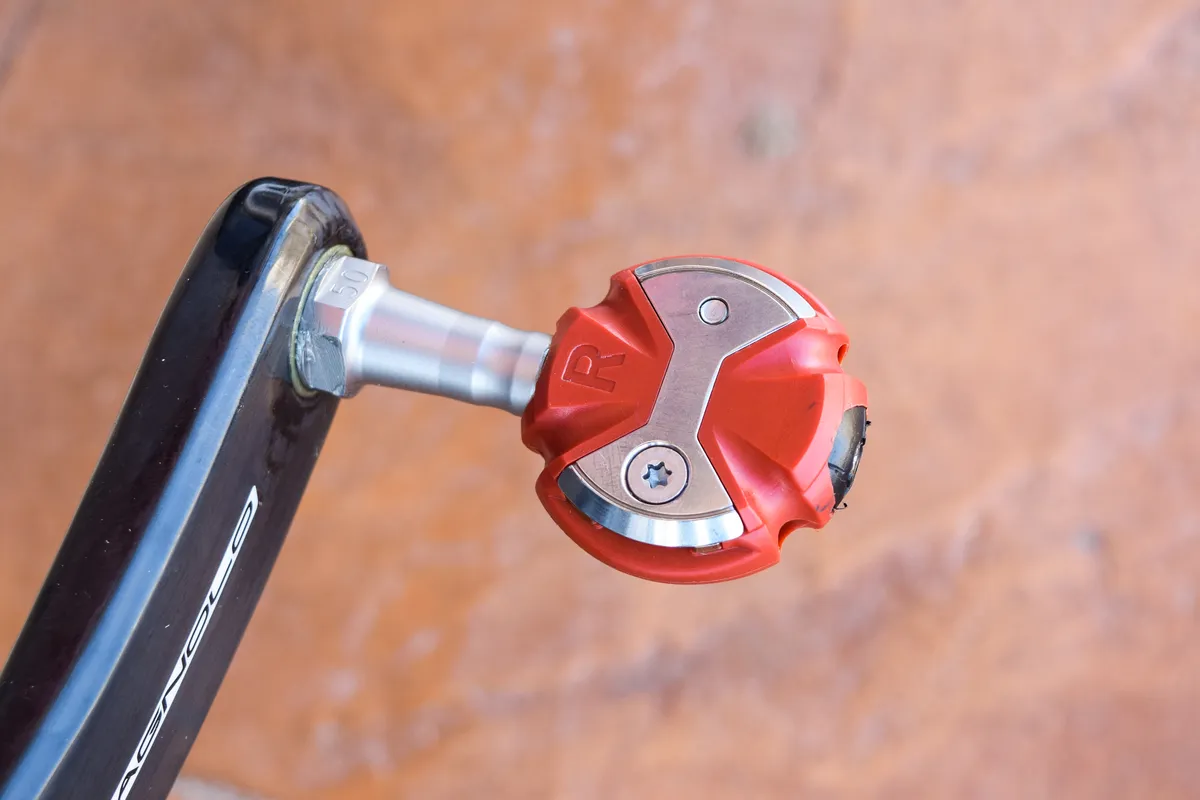Speedplay’s distinctive lollipop-shaped road pedals are old enough to vote, and I’ve been using them for over a decade, racking up thousands of miles in all weathers.
Speedplay pedals are not without their quirks but, as well as appreciating their unique features, I’ve long been impressed by their durability, and I've only ever had to retire a pedal after a serious crash.
Speedplays may not be for everyone, but to my mind they definitely deserve a place in the pantheon of High-Mileage Heroes.
BikeRadar’s High-Mileage Heroes
High-Mileage Heroes is a new series on BikeRadar showcasing the products that have stood the test of time and become part of our everyday riding.
These aren’t reviews, but rather a chance to talk about the kit we depend on and the products we choose to use when we’re not reviewing fresh gear.
Why choose Speedplays anyway?

The Speedplay Zero’s USP is that it’s a double-sided road pedal with fully adjustable, non-centring float.
This is achieved by housing the engagement mechanism in the cleat, which clips over the pedal, rather than into it.
Speedplays have been used by many pro riders over the years and they’re popular with bike fitters because there’s so much scope for adjustment. They’re also pretty darned light and offer low stack height compared to some alternatives.
I can’t actually remember how I chose Speedplay Zeros for my first road pedals, but the decision was likely influenced by the countless hours I spent on bike forums in the early days of my cycling career.
As someone with slightly wonky physiology and occasionally grumbling knees, the free float appealed, and also they just looked cool and different to the mainstream.
I’ve since dabbled with other systems and these days I do a lot of miles on gravel bikes fitted with SPDs, but I always come back to Speedplays for pure road riding.
More like Slowplay when I’m riding them, eh

I’ve used Speedplay Zeros for almost all of my road riding for around 12 years, logging countless miles through all seasons on an endless succession of my own bikes, and ones I’m testing for BikeRadar.
I am intimately familiar with their foibles – the cleats really don’t like it when you stand on a muddy verge, for example – and I’ve spent many happy moments pumping grease through the pedal bearings to keep them running smoothly.
The connoisseur’s choice is definitely the stainless-steel spindle version of the Zero. The cheaper chromoly model is functionally identical but the spindles tend to rust where the paint rubs off, which just doesn’t look very nice.
I’m an avowed fan of the niche Zero Pavé too, now sadly discontinued in the Wahoo shake-up (see below).
Wear, tear and crashing
The only real failure I’ve ever experienced using Speedplays was a snapped cleat spring, likely the result of me totally ignoring manufacturer recommendations on cleat longevity.
An advantage of the cleat design is that the spring experiences the most stress during clipping in and clipping out, when it needs to flex. This means if it's going to fail, it's very unlikely to do so under pedalling loads, which would be much more dangerous.
When the spring snapped I was able to keep riding with one foot clipped in – annoying, but not the end of the world. Since that incident, I’ve kept a spare cleat spring stashed with my multi-tool.

Aside from destroying a pedal in a bad crash over ten years ago (my elbow still bears the scars from sliding along the road), I’ve never succeeded in abusing a Speedplay pedal to the point where I’d consider it unusable.
The plastic pedal bodies do suffer wear, which allows the cleats to rock side-to-side slightly, but the bearings just keep soldiering on with occasional grease injections.
The old-style cleats suffered rapid wear to their outer plates from walking, but I made extensive use of covers including Speedplay’s own Coffee Shop Caps and aftermarket Keep on Kovers, both since rendered obsolete by the move to a walkable cleat design.
Speedplay is dead, long live Speedplay

In 2019 Wahoo acquired Speedplay and, earlier this year, the pedal range was revamped. I’m currently testing the new design, in fact.
Now, the Zero name only applies to the stainless-steel spindle version, but the fundamentals of the pedals haven’t changed; they’re functionally almost identical to the ones I’ve used for years, with some key updates aimed at making them more durable and user-friendly.
As someone who likes maintainable kit, I’m slightly sad the bearings are now sealed for life – we’ll have to wait and see how durable they really are – but I’m pleased Speedplays seem to be here to stay, and that the new pedals and cleats are backward compatible.
Will I be writing another piece like this in 10 years about the Wahoo Speedplays? Watch this space.
